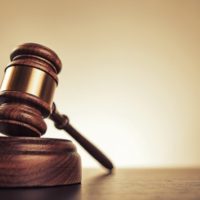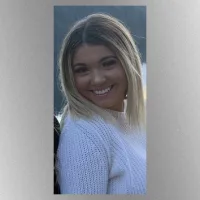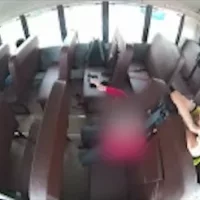
(KENOSHA, Wisc.) — A jury heard two wildly different scenarios of how two men were killed and another was wounded allegedly by teenager Kyle Rittenhouse during a chaotic 2020 protest in Kenosha, Wisconsin.
In opening statements presented Tuesday morning to the Kenosha County Circuit Court panel, a prosecutor said the evidence will show Rittenhouse, 18, was an “active shooter” whose reckless behavior led to the deadly incident. But a defense attorney countered that the same evidence indicates that it was “reasonable” for the teenager to use deadly force to defend himself from what he claims was a mob attacking him.
Rittenhouse has pleaded not guilty to felony charges of first-degree reckless homicide, first-degree intentional homicide and attempted first-degree intentional homicide. He has also pleaded not guilty to a misdemeanor charge of possession of a firearm by an individual under the age of 18, and an infraction of violating a curfew that was imposed on the city at the time.
‘The only person who killed anyone was the defendant’
“Out of the hundreds of people that came to Kenosha during that week, the hundreds of people that were out on the streets that week, the evidence will show that the only person who killed anyone was the defendant, Kyle Rittenhouse,” Thomas Binger, a Kenosha County assistant district attorney, told the jury multiple times during his presentation.
The chaos unfolded on Aug. 25, 2020, after protests erupted in Kenosha over a police officer shooting Jacob Black, a 29-year-old Black man, paralyzing him. Riots, vandalism and looting broke out, prompting an online call for armed “patriots” to come to the city to protect lives and property.
Rittenhouse, who was then 17, answered the call to help, his attorney, Mark Richards, told the jury. Richards used a series of photos and videos in his statement appearing to show Rittenhouse being kicked, hit in the head with a skateboard and having a gun aimed near his head when he shot and killed one man, Anthony Huber, 26, and severely wounded another, Gaige Grosskreutz, 27.
But Binger told the jurors that the fatal face-off started minutes earlier when Rittenhouse chased an unarmed protester, Joseph Rosenbaum, 36, and shot him four times, including a fatal shot to the back, in a used car lot Rittenhouse claimed to have been protecting.
Binger argued there was nothing reasonable about the behavior of Rittenhouse that night and suggested that the teenager from Antioch, Illinois, who was armed with an AR-style semiautomatic rifle with a 30-round clip, was the aggressor who sparked the deadly confrontation.
“Based on all of that evidence, I think you will agree with me that the defendant is guilty of all of these charges,” Binger told the 11 women and nine men of the jury.
‘Privileged under the law of self-defense’
Richards, who gave his statement after Binger, blamed Rosenbaum for escalating the violence that led to his death as well as the killing of Huber and the wounding of Grosskreutz, who is expected to testify at the high-profile trial.
“Mr. Rosenbaum is ultimately the individual who lit the fuse that night,” said Richards, who — during a hearing out of the presence of the jury — claimed Rosenbaum was discharged from a hospital that day after allegedly attempting suicide.
Richards said the evidence will show Rosenbaum had threatened to kill Rittenhouse and others who were attempting to protect property earlier in the evening. He claimed Rosenbaum, who was allegedly setting garbage cans on fire, seized on his promise when he found Rittenhouse isolated from his cohorts and that he attempted to “steal” the teenager’s gun and use it on him.
He said the case “isn’t a whodunit” and that Rittenhouse’s actions were “privileged under the law of self-defense.”
Richards displayed photos and video that he said show Rittenhouse using restraint from shooting people approaching him with their hands up, including Grosskreutz when he initially approached Rittenhouse after he had been knocked to the ground and kicked. He claimed Rittenhouse only shot Grosskreutz when the man aimed a gun near his head.
He then said Rittenhouse fatally shot Huber after Huber allegedly hit him in the head with a skateboard twice, the second time after the teen was on the ground and kicked in the face by an unidentified individual he referred to as the “jump-kick man.”
“The defendant believes that the amount of force which he used or threatened to use was necessary to prevent or terminate interference and that his belief was reasonable,” Richards told the jury. “You as jurors will end up looking at it from the standpoint of a 17-year old under the circumstances as they existed on Aug. 25.”
First prosecution witness
The prosecution called its first witness, Dominick Black, the boyfriend of Rittenhouse’s sister, who allegedly purchased the rifle for Rittenhouse and joined Rittenhouse in Kenosha on the night of the killings.
Under questioning from both Binger and Richards, Black said that during the protest he was positioned on the roof of the car dealership they were protecting. He claimed protesters were throwing rocks and at least one gas bomb at him, but he said neither he nor anyone on the roof with him retaliated.
“Did you feel that by these people throwing rocks at you or throwing a gas bomb at you that you were in danger?” Binger asked.
Black, 20, replied, “I mean pain, yes, but not danger. I knew it wasn’t going to kill me.”
“So, you felt like it wasn’t enough to use deadly force?” Binger asked.
“Correct,” answered Black, who has pleaded not guilty to two counts of intentionally giving a dangerous weapon to a person under the age of 18, causing death, and is scheduled to go on trial in January.
Under cross-examination from Richards, Black said that during the protest he witnessed Rittenhouse providing first aid to injured protesters and confirmed that he told investigators “the only person I saw helping anyone was Kyle.”
The trial is scheduled to last a little over two weeks. Twenty jurors were chosen to hear the case, and 12 will be picked at the end of the evidence portion of the trial to decide Rittenhouse’s fate.
Copyright © 2021, ABC Audio. All rights reserved.















